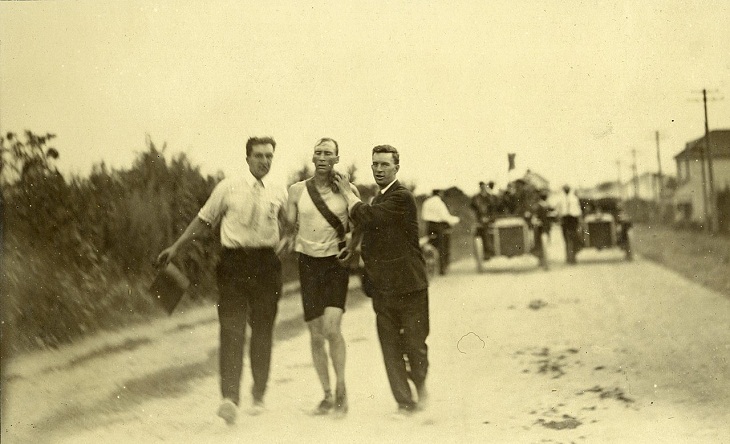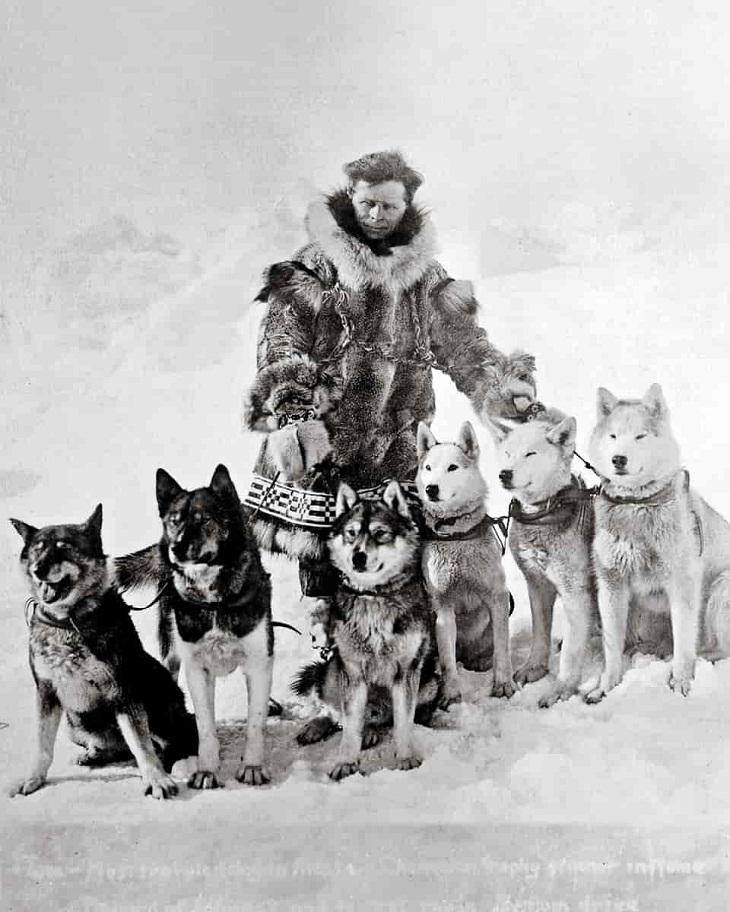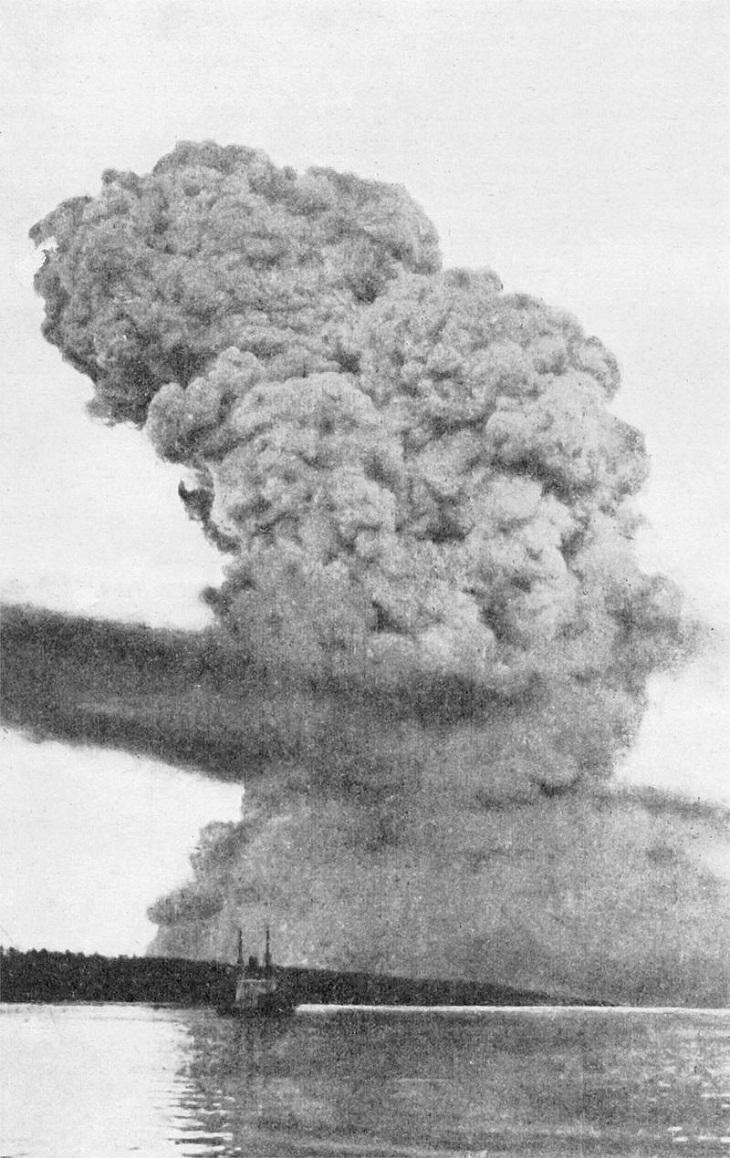Engraving by Hendrik Hondius portraying three people affected by the plague. (Image source:
Wikimedia Commons)
This is perhaps one of the most fascinating and perplexing events in human history. It all began in the summer of that year when a woman named Frau Troffea started to dance on the streets of Strasbourg, a city in present-day France. At first, onlookers were amused by her unusual behavior, but as the hours passed, more and more people joined in, compelled to dance by some unknown force.
Within days, hundreds of people were caught up in the strange dance, unable to stop even as they collapsed from exhaustion or suffered broken bones. Witnesses reported that some dancers continued to move even as they lay dying on the ground.
The cause of the Dancing Plague remains a mystery to this day. However, historians have speculated that it may have been a form of mass hysteria, triggered by stress, social pressures, or even the consumption of contaminated food or water.
What is clear is that the Dancing Plague had a profound impact on the people of Strasbourg, both at the time and in the centuries that followed. Some saw it as a sign of divine punishment, while others believed it was caused by demonic possession. The event also had a lasting impact on the study of psychology and the way we understand the workings of the human mind.
While the Dancing Plague may seem like a bizarre and isolated incident from a bygone era, it serves as a powerful reminder of the strange and mysterious ways in which our minds and bodies can interact.
2. The Battle of Los Angeles
Also known as the "Great Los Angeles Air Raid," this mysterious incident took place in the early hours of February 25, 1942, just a few months after the United States entered World War II.
What began as a blackout drill in response to the threat of Japanese air attacks quickly turned into a full-blown panic when a series of unidentified flying objects appeared in the night sky over Los Angeles. Despite extensive military efforts to identify and intercept the objects, which were initially believed to be Japanese warplanes, the objects continued to hover over the city for several hours, causing widespread fear and confusion.
The incident made headlines around the world, and remains one of the most hotly debated and mysterious events of its kind. Some have suggested that the objects were extraterrestrial in origin, while others have proposed more conventional explanations such as weather balloons or military aircraft.
The Battle of Los Angeles may forever remain a mystery, but its impact on the public imagination continues to this day.
3. The Great Emu War
The emu is a prominent cultural symbol of Australia and is extensively depicted in Aboriginal Australian mythology. However, there was a time when the nation declared war on this bird!
The beginning of the Great Emu War can be traced back to a group of Western Australian farmers who, exasperated by the destruction wrought by the rampant wild emu population, implored the government to intervene.
In response, the government dispatched a team of soldiers armed with machine guns to cull the emu population. However, the emus proved to be more than a match for the ill-equipped soldiers, who struggled to hit their fast-moving targets and soon found themselves overwhelmed by the sheer number of birds.
As the days turned into weeks, the emus continued to raid crops and damage property, and the conflict escalated into a full-blown war. The soldiers attempted several times to outsmart the emus with new tactics and weapons, but were unable to halt their spread across the landscape.
Eventually, the government was forced to concede defeat and withdraw its troops, leaving the emus to roam free and reign supreme over the Australian outback.
4. The 1925 Serum Run to Nome
Leonhard Seppala with his dogs after the serum run in 1925. (Image source:
Wikimedia Commons)
The 1925 Serum Run to Nome is one of the most remarkable stories of human determination and perseverance in the face of unimaginable odds. The event, which took place in the frigid winter of 1925, was a desperate race against time to deliver lifesaving serum to the remote town of Nome, Alaska, which was in the grips of a deadly diphtheria outbreak.
At the time, the only way to get the serum to Nome was by dog sled, over a treacherous 674-mile (1085 km) route across frozen rivers and snow-covered mountains. With the lives of countless children at stake, a relay of brave mushers, set out from Nenana, Alaska, each one handing off the precious cargo to the next in a grueling race against time. One of the teams belonged to Leonhard Seppala, Alaska’s most revered musher, who played a pivital part in the incredible serum run.
The journey was not without its dangers, as the mushers battled blizzards, whiteout conditions, and temperatures that dropped as low as -60°F (-51.11°C). At times, the dogs were forced to swim through icy rivers, and the mushers themselves suffered frostbite and exhaustion.
But despite the challenges, the serum made it to Nome in just five and a half days, thanks to the heroic efforts of the mushers and their dogs. The serum was immediately administered to those in need, and the outbreak was contained.
The 1925 Serum Run to Nome became known as the "Great Race of Mercy" and is still celebrated today as a testament to the resilience of the human spirit. The mushers and their dogs became heroes, and their selflessness and bravery in the face of adversity continue to inspire people around the world. The event also paved the way for advances in medicine and transportation in remote areas.
5. Nellie Bly’s Trip Around The World
In 1889, Nellie Bly, an intrepid journalist from New York City, set out on a journey that would make her a household name around the world. Her mission: to travel around the globe in less than 80 days, a feat inspired by Jules Verne's classic novel Around the World in 80 Days.
Bly's journey took her across oceans and continents, through jungles and deserts, and into the hearts and minds of people from all walks of life. Along the way, she faced numerous challenges, from seasickness and language barriers to cultural misunderstandings and political turmoil.
Bly, however, remained undaunted, using her wit, charm, and determination to win over the people she encountered and overcome the obstacles along the way. Her journey was a triumph of human ingenuity and perseverance, and a testament to the power of the human spirit to overcome adversity and achieve great things.
Bly's trip around the world was also a landmark moment in the history of journalism, as it helped to establish her as one of the most influential and groundbreaking reporters of her time. Her stories and dispatches from the road captivated readers around the world, and helped to shape the way that people think about travel, adventure, and the power of the written word.
6. The Halifax Explosion: Canada's Forgotten Tragedy
On December 6, 1917, a catastrophic event rocked the city of Halifax, Nova Scotia, Canada, leaving death and destruction in its wake. The Halifax Explosion, as it would come to be known, was the result of a collision between two ships in the city's busy harbor, which triggered a massive explosion that was felt for miles around.
The explosion was caused by the collision of the SS Mont-Blanc, a French cargo ship carrying a cargo of highly explosive munitions, and the Norwegian vessel SS Imo. The impact of the collision ignited the munitions on board the Mont-Blanc, causing a massive explosion that destroyed much of the surrounding area.
The blast killed more than 2,000 people and injured thousands more, leaving a path of devastation that would take years to fully recover from. It was so powerful that it leveled entire neighborhoods, shattered windows miles away, and even caused a tsunami that flooded parts of the city.
Even though the Halifax Explosion was a tragedy of unprecedented proportions, it has largely been forgotten in the annals of history, eclipsed by other tragedies that have occurred since. However, the impact of the explosion on the people of Halifax and the surrounding area cannot be overstated.
In the aftermath of the disaster, the people of Halifax rallied together to provide aid and support to the survivors, showing remarkable resilience and courage in the face of unimaginable tragedy.
7. The Tanganyika Laughter Epidemic
This is no laughing matter. In 1962, a strange and inexplicable phenomenon swept through the small town of Kashasha in Tanganyika (now Tanzania) and quickly spread to neighboring villages. 'The Tanganyika Laughter Epidemic', as it came to be known, was a mysterious outbreak of uncontrollable laughter that left the local population reeling and bewildered.
It's said that the outbreak began in a girls' school, where a group of students suddenly burst into fits of laughter that lasted for hours. The outbreak of laughter quickly spread to other students and eventually to the surrounding community, in spite of efforts to quell it. Before long, hundreds of people were afflicted with the strange malady, which caused them to laugh uncontrollably, often for days on end.
This was a bewildering and unsettling event, and one that defied explanation. Some speculated that it was a form of mass hysteria or a reaction to stress and anxiety, while others suggested that it was the result of a viral or bacterial infection.
While doctors and scientists struggled to find a cure or cause for the epidemic, the laughter eventually subsided on its own, leaving behind a traumatized community. The weird event remains a mystery to this day.
8. The 1904 Olympic Marathon

Thomas Hicks and supporters (Image source: Wikimedia Commons)
The men's marathon at the 1904 Olympic Games stands out as one of the most unusual races in history. Held as part of the 1904 Summer Olympics in St. Louis, Missouri, the marathon was a true test of the athletes' physical and mental strength.
The race began inauspiciously, with just 32 runners from four different countries taking to the starting line. Among them were several seasoned veterans and promising newcomers, all vying for the chance to claim Olympic glory and etch their names into the annals of history.
But as the runners set off on the 24.85-mile (40 km) course, it quickly became clear that this was no ordinary race. The route was marked by treacherous hills, poorly maintained roads, and scorching temperatures, all of which would conspire to make the marathon one of the most difficult and harrowing events in Olympic history.
As the miles wore on, the runners began to succumb to the punishing conditions. Some fell prey to cramps and heat exhaustion, while others were plagued by blisters, broken bones, and other injuries. But even as their bodies cried out for mercy, the runners pressed on, driven by a fierce determination to cross the finish line and claim their place in history.
In the end, it was an unexpected contender who emerged victorious, as American runner Thomas Hicks powered through the pain and crossed the finish line in first place. But Hicks' win was hardly a triumph of athleticism alone; along the way, he had been given a series of dubious "remedies" by his handlers, including brandy, strychnine, and even rat poison.
Although the 1904 Olympic Marathon was marred by controversies and challenges, its achievements remain a testament to mankind's enduring spirit. Its competitors pushed themselves to the brink of exhaustion and beyond, defying the odds and inspiring generations of athletes to come.
9. The War of the Bucket
In 1325, two rival Italian cities, Modena and Bologna, went to war over a bucket. Yes, you read that correctly - a bucket. While it may seem strange that a war could be fought over a bucket, this event was the result of years of tension and rivalry between two powerful Italian cities, Bologna and Modena.
The story goes that in 1325, a group of soldiers from Modena snuck into Bologna and stole a bucket from a well in the town square. This seemingly small act of theft led to an all-out war between the two cities that lasted for several years.
The citizens of Bologna were outraged by the theft of their bucket and demanded that their leaders take action. In response, Bologna's army marched towards Modena, and the two sides engaged in a fierce battle. The war quickly spread throughout the region as other cities took sides and joined the fight.
The conflict was brutal, with both sides suffering heavy casualties. However, despite the violence, the bucket remained the central focus of the war. It was eventually returned to Bologna, where it remains to this day as a symbol of the city's victory.
10. The Tunguska Event

Few historical incidents are as intriguing and mystifying as the Tunguska event. On June 30, 1908, a massive explosion occurred in a remote part of Siberia, Russia, known as the Tunguska region. The explosion was so powerful that it is estimated to have had the equivalent force of 10-15 megatons of TNT, making it the most powerful explosion in recorded history.
As a result of the blast, trees were flattened for hundreds of miles around the blast site and the shockwaves were felt as far as Europe and Asia. In spite of the incredible devastation caused by the explosion, no injuries or deaths were reported.
The cause of the Tunguska Event remains a mystery to this day, with many theories proposed over the years. Some have suggested that it was caused by a comet or meteorite, while others believe that it may have been a nuclear explosion caused by extraterrestrial activity.
Although extensive investigations and studies have been conducted, no conclusive evidence has been found to support any of the theories concerning the cause of the Tunguska Event. Yet, the curious episode has left a lasting impression on popular culture and scientific discourse, inspiring countless theories and stories about extraterrestrial life.








